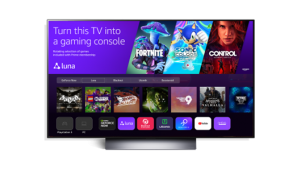Netflix Traffic Drops Due to New Encoding Scheme

Sandvine said the drop is likely the result of improvements by Netflix to better compress its video library. Multichannel News offered the following analysis:
Netflix, which has about 46.97 million U.S. streaming subs and 34.53 million internationally, began to roll out its more tailored, title-by-title encoding approach late last year and pivot away from its previous, fixed “one-size-fits all” bitrate ladder. Under the new approach, Netflix applies more bits when needed (in a movie or TV show with a lot of action scenes, for example) and less bits where they aren’t (such as in animation titles).“It should be noted that at the time of collection, it was unclear if Netflix had re-encoded their entire library, so an update in the second half of this year may better reveal the impact Encode Optimization may have had on networks in the region,” the bandwidth management company noted in the study.
Other notable eaters of downstream data on North American fixed access networks included YouTube (17.53%), Amazon Video (4.26%), iTunes (2.91%), and Hulu (2.68%).
Sling TV, Dish’s OTT-TV service, accounted for less than 1% of peak downstream traffic, but, for the first time, was among the top 20 apps on most networks, Sandvine said.
Netflix, at 32.72%, also led on aggregate bandwidth on fixed access networks in North America, followed by YouTube (17.31%). BitTorrent led the upstream category with 18.37%, compared to YouTube (13.13%) and Netflix (10.33%).
The story is different on the mobile front. YouTube (20.87%) was tops on the downstream on North American mobile access networks, compared to Facebook (13.97%) and Netflix (3.72%). Facebook absorbed the most upstream data on those mobile nets (14.85%), compared to YouTube (5.01%), Snapchat (4.36%), Instagram (3.35%) and BitTorrent (2.16%).
Sandvine said real-time entertainment remained the traffic category in the region, responsible for over 71% of downstream bytes during peak period, up from 70% in the last report.
With 4K streaming, high dynamic range (HDR) content and virtual reality expected to rise in adoption, Sandvine sees North America becoming the first region to see real-time entertainment surpass the 80% downstream traffic streaming threshold by the end of 2020.
Other highlights of the study include:
•Amazon Video is now the third ranked downstream application in North America (up from eighth a year ago), accounting for 4.3% of fixed traffic.
•Sling TV now appears among the top 20 applications on most US networks, but still accounts for less than 1% of traffic.
•Streaming audio and video now accounts for 71% of evening traffic in North American fixed access networks. Sandvine expects this figure will reach 80% by 2020.
•Cloud Storage (Dropbox, iCloud, Google Drive, etc.) has surpassed Filesharing as the largest source of upstream traffic during peak period on North American fixed access networks. BitTorrent now accounts for less than 5% of total daily traffic in the region.
•More than 60% of mobile traffic in North America is now encrypted and Sandvine predicts some networks will surpass 80% this year.
The Global Internet Phenomena study’s findings are based on anonymous subscriber data collected from more than 300 service providers.
- Log in or register to post comments

























































